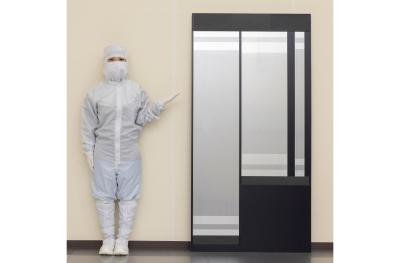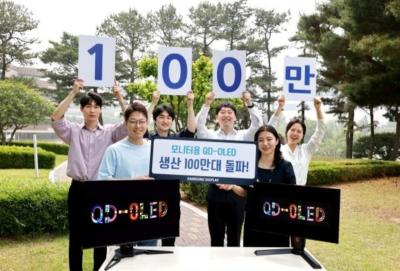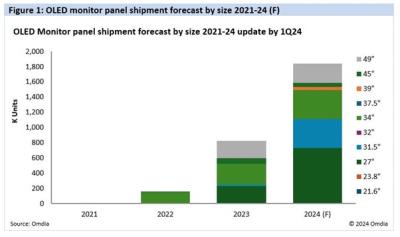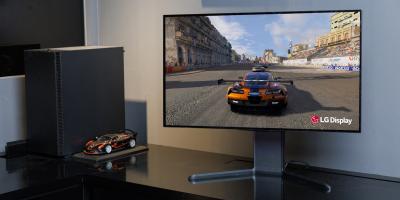OLED monitors: introduction and industry news - Page 2
Is LG Display leading over Samsung Display with the quality and performance of its latest OLED?
Since Samsung started mass producing AMOLED displays in 2007, most people believe that the company is not only the leader in OLED production capacity, but also in the performance of its displays. In most cases, Samsung has been the first company to develop and manage to mass produce the most advanced OLED displays, and the first to adopt the latest OLED materials, architectures, and processes.
There are some signs that this could be changing, although honestly it's a bit too early to know. In May 2024, Apple launched its first OLED Tablets, and according to reports, Apple chose LG Display as its main supplier, ordering around 60% of its iPad OLEDs from LGD (with all of the 13" model orders going to LG), and the rest from Samsung. Later it was reported that Apple had to delay the introduction of its 2024 iPad Pro devices as Samsung faced low production yields and could not deliver displays in time.
DSCC sees OLED market revenues growing 12% in 2024 helped by Apple's first OLED tablets
DSCC says OLED revenues are expected to grow 12% in 2024 and reach $44 billion. OLED panel shipments will grow 18% in 2024. The fastest growing OLED market segments are tablets and monitors.
OLED tablet panel shipments will increase 202% in 2024, and this will result in a 632% increase in revenues, driven mostly by Appe's first adoption of OLED panels in its 13" and 11.1" iPad Pro tablets. OLED monitors will grow slower, but still impressively - 80% in shipments, and 45% in revenues.
DNP starts producing 8-Gen FMM masks at its new $140 million Kuosaki plant
Dai Nippon Printing (DNP) announced that it has started mass producing fine metal masks (FMM) at its new production line at Kurosaki Plant, in Fukuoka, Japan. DNP invested $140 million to expand the production line.
8-Gen and 6-Gen FMM samples (DNP)
The new production line is producing masks suitable for 8-Gen substrates. As the OLED industry is moving to expand its IT AMOLED display production for laptops, monitors and tablets, companies are building larger (8.7-Gen mostly) production lines that require these larger masks. While the company is already producing at the new fab, it will also announced that it may gradually expand production further at the new line, depending on market demand.
Visionox announces plans to build a $7.6 billion 8.6-Gen AMOLED line in Hefei
Visionox is the latest company to announce a new AMOLED production line, targeting the IT display market - laptops, monitors and tablets. The company said that it will best 55 billion Yuan (around $7.6 billion USD) to build a 8.6-Gen production line in Hefei, Anhui province.
Visionox's production line will have a monthly capacity of 32,000 substrates. The company did not share any details regarding the timeline of this project, or its financing.
Samsung Display says it shipped over a million QD-OLED monitor panels
Samsung Display announced that it shipped over a million QD-OLED monitor panels. SDC started producing these panels in 2022, and is currently offering a wide range of panels, from 27-inch to 49-inch, mostly targeting gaming monitors. SDC is working with 10 monitor producers, that have released over 90 QD-OLED monitor models.
Samsung says that it plans to expand its QD-OLED market, by targeting professional monitors and content creation monitors.
LG Display shows its latest OLED displays at Displayweek 2024
LG Display demonstrated its latest OLED display prototypes and commercial panels at Displayweek 2024. The company showed flexible panels, automotive displays, transparent OLED, gaming monitors, a 10k nit microdisplay and more.
So first up, LG Display shows its automotive Advanced-Thin-OLED (ATO) displays, which are produced on glass substrates and use a tandem structure. These OLEDs are lower in cost compared to LGD's flexible automotive p-OLED panels, but still enable low-weight and thin profile, and the excellent image quality of an OLED display. The smaller display was a 12.3" 2400x900 (209 PPI) 1,000 nits panel, while the other panel was larger at 17" 1920x2560 (188 PPI).
IDC: Samsung leads the OLED monitor market, with a 34.7% market share
Samsung Electronics started selling OLED monitors in 2023, and one year later, according to IDC, it leads the global OLED monitor market, with a 34.7% market share by revenues. It also is the leader in shipments with a share of 28.3%.
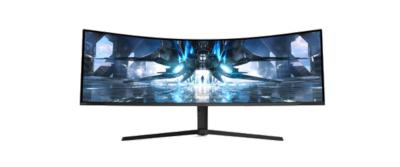
Samsung's first monitor was the 34" OLED G8, a QD-OLED gaming monitor. Since then Samsung released several new OLED monitors, and it's likely that the OLED Monitor market is set for fast growth ahead.
Omdia: OLED monitor shipments to rise 123% in 2024, following a 415% jump in 2023
Omdia says that OLED monitor shipments rose 415% in 2023, and the trend will continue in 2024, with a 123% increase over 2023. Total shipments in 2024 will reach 1.84 million units, driven mostly by Samsung Electronics and LG Display.
The main market for OLED Monitors is high-end gaming, especially esports. The entire monitor market has seen a downturn in 2023 and 2023, but Omdia says the market is expected to recover slowly in 2024.
TCL CSoT denies reports of a $8.7 billion investment in a new 8-Gen AMOLED fab
As OLED display makers are racing to launch IT AMOLED displays (for laptops, monitors and tablets), there has been recent reports that TCL CSoT has decided to build a 8-Gen AMOLED line, in a 63 billion Yuan (about $8.7 billion USD) investment.
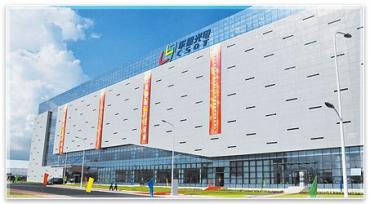
TCL CSoT issued a statement that says that this report is inaccurate, and the company has not made a decision yet and does not have an investment plan.
LG Display developed the world's first OLED gaming monitor panel with a switchable refresh rate and resolution
LG Display announced that it has developed world's first OLED gaming monitor panel with a switchable refresh rate and resolution. The company already mass producing this panel and will now aim to accelerate its market adoption and expects the first product to use this panel to arrive soon from LG Electronics, and other global gaming brands.
The new panel is 31.5" in size, and allows users to choose between two modes - high refresh rate more (480Hz and FHD) and high resolution mode (4K, 240Hz). The high refresh mode is aimed towards games in which speed is particularly important, such as first-person shooter (FPS) or racing games. The higher-resolution mode is more suitable for watching movies or 4K content.
Pagination
- Previous page
- Page 2
- Next page

